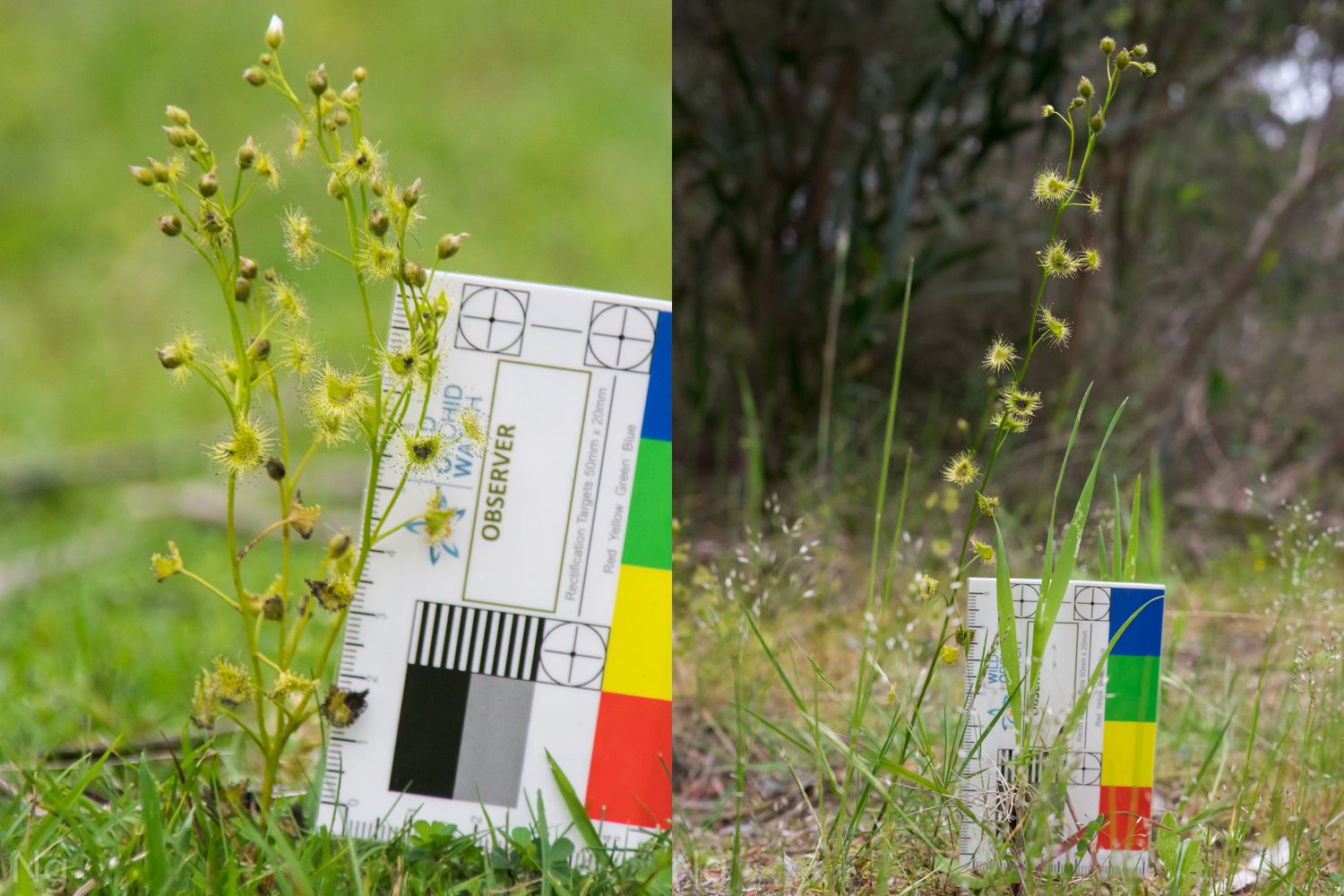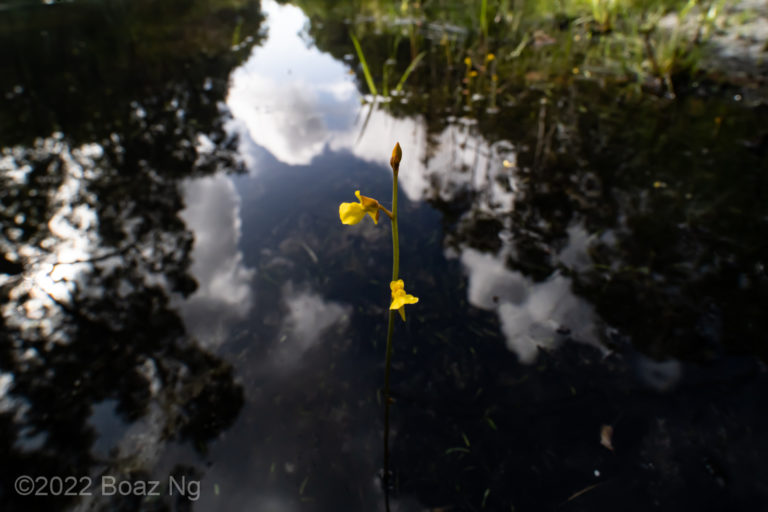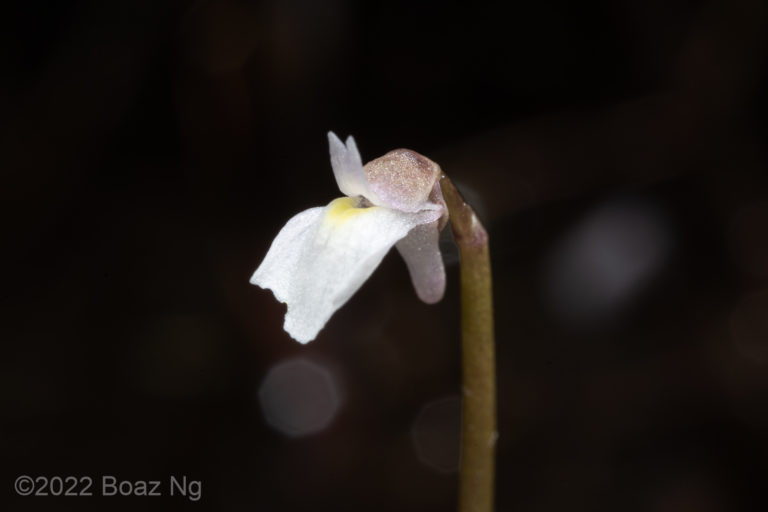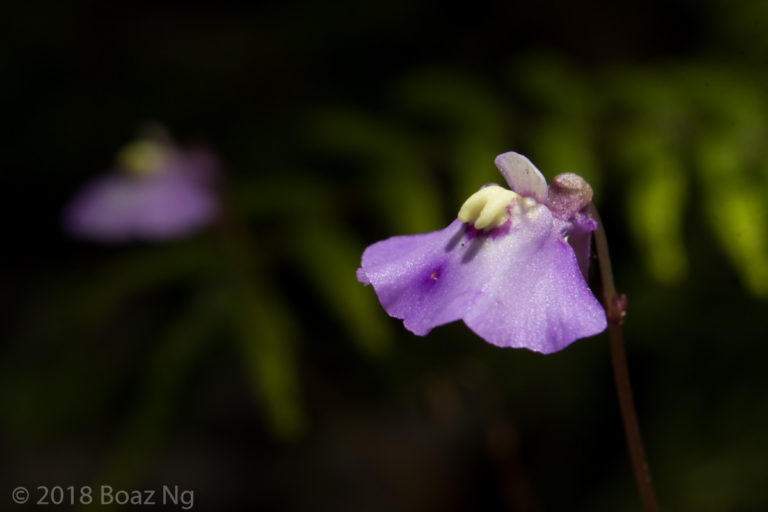Drosera hookeri and Drosera gunniana form a complex of plants with somewhat controversial taxonomy. In mid October, I investigated the differences between D. hookeri and D. gunniana in the Melbourne region. Here’s a set of comparison pics and general descriptions of the plants.
The local form of Drosera hookeri is short, ranging from approximately 5 – 15 cm in height. Early in the season, the plants grows a substantial basal rosette of wide kidney-shaped leaves. One or more main stems emerge directly from the basal rosette. These stems often split into multiple arms in the lower half of the plant. The inflorescences consist of numerous small flower buds, which are held close to the leaves on the stem. The sepals are densely pubescent. The leaves and sepals of the plant are invariably coloured a distinctive light green and the petals are pure white, drying brown. The seed is lobed at one extremity and slightly flattened at the other, giving the general profile of a stubby bottle. The surface of the seed is reticulated with a deeply pitted texture. Drosera hookeri generally grows in open clearings, almost always amongst grass.
The local form of Drosera gunniana is tall, ranging from approximately 15 – 25 cm in height. Early in the season, the plants grows a moderately dense basal rosette of wide kidney-shaped leaves. Typically, one main stem emerges directly from the basal rosette. In larger plants, the stem may branch towards the terminus. The inflorescences consist of a few medium sized flower buds, which are regularly spaced at a moderate distance away from the last leaves. The sepals are densely pubescent with long hairs. The leaves and sepals of the plant are usually coloured an olive colouration. The petals are normally very light pink and dry pink, although some populations have white flowers. The seed is lobed at one extremity and slightly pointed at the other, giving the general profile of a hand grenade. The surface of the seed is reticulated with a shallowly pitted texture. Drosera gunniana generally grows at the edge of bushland and swampy bushland.

Note that D. hookeri branches close to the rosette and is short.
Compare to the tall profile of Drosera gunniana, with a single main stem that branches close to the terminus.

Note that the rosettes of Drosera hookeri are generally denser and are coloured a bright green.
Compare to Drosera gunniana, which are moderately dense and coloured olive.

Note that the flower buds of Drosera hookeri are compact and bright green.
Compare to the sepals of Drosera gunniana, which are a distinctive olive green. The flowers of this specimen represent the deepest pink I observed this week.
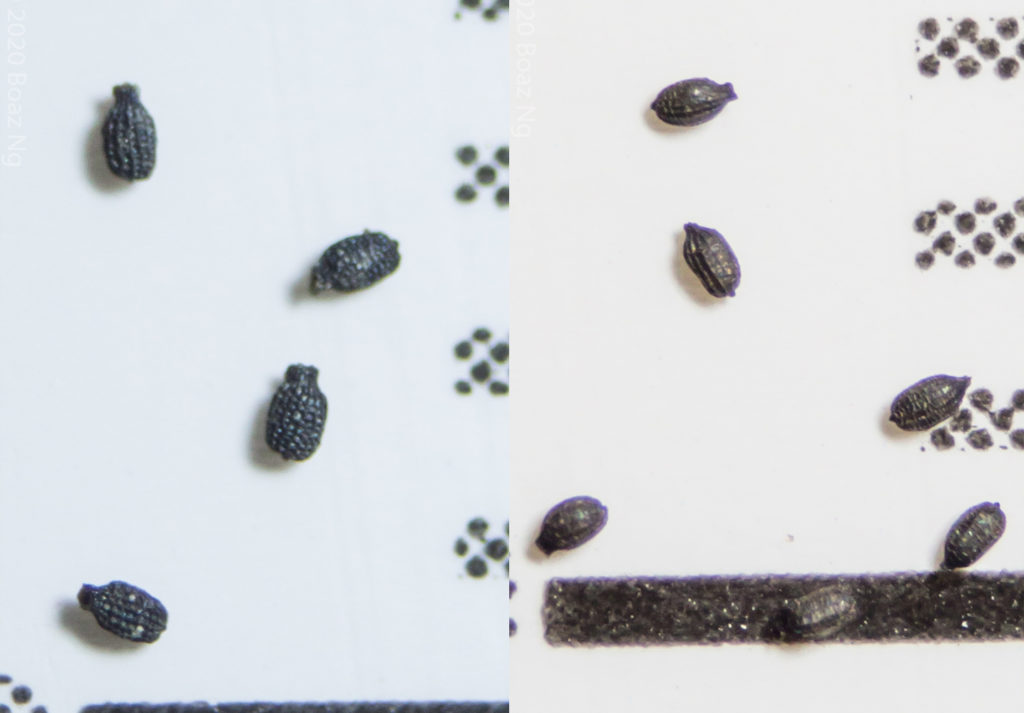
Note that both seeds have a lobed appendage at one end.
The seeds of Drosera hookeri are flattened at the other end, with deeply pitted reticulations.
Compare with the seeds of D. gunniana, which are pointed at the other end, and are shallowly reticulated.

Note that the flowers of Drosera hookeri are pure white. The flower buds are bright green and compact.
Compare to the very pale pink flowers of Drosera gunniana. Note that the flower buds are comparatively plump and large and are coloured a distinctive olive green.

Drosera hookeri can typically be found in open grassy clearings such as firebreaks and the sides of walking trails.
Drosera gunniana has a less defined niche, but generally grows at the edge of bushland or in drier regions of swampy shrubland.
Oftentimes, both species can be found within meters of each other. Interestingly, the plants are rarely substantially intermixed. In these areas, D. gunniana generally grows closer to the edge of bushland whereas D. hookeri grows towards the centre of the clearings

Note that the inflorescence of Drosera hookeri are crowded with blooms and are held close to the last leaves. The flower buds are compact and bright green.
Compare to the inflorescence of Drosera gunniana. The flower buds are widely spaced on a long inflorescence that is held comparatively further away than the last leaves. The flower buds are olive green and are plump.

These plants of Drosera hookeri are short, but within the commonly observed range.
This plant of Drosera gunniana represents a specimen at the taller end of the spectrum. Note that large plants often branch near the terminus of the main stem.

